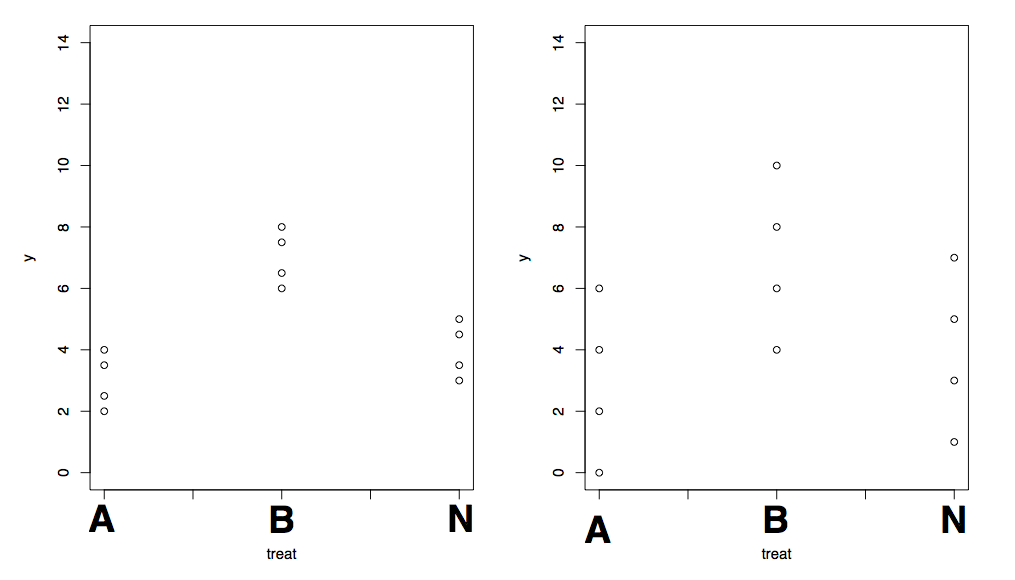Exercise: Analysis of variance
Objective
This exercise is intended to have students intuit the analysis of variance, so that everything that follows will be merely detail. Worked out pretty well.
Exercise
Setup
Let’s suppose you’re a chemist working on coatings to protect industrial machinery from water damage. You have developed two different paint additives, and want to test whether they make any difference when added to paint.
To test the additives, you create four independent batches of paint with each one. You also have four independent batches of paint without an additive. The paint it applied to sheets of metal and exposed to identical, harsh conditions. Data are the number of months before each paint needs replacing.
The null hypothesis is that all three formulations last the same length of time: formula A, formula B, and no additive. Two alternate outcomes for the data are presented in the dotplots.

Questions
- What is the alternative hypothesis?
- What, roughly, are the sample means for treatments A, B, and N as shown in the left plot? In the right?
- Does the left or right plot seem to indicate stronger evidence against the null hypothesis? How do you explain the reason why?